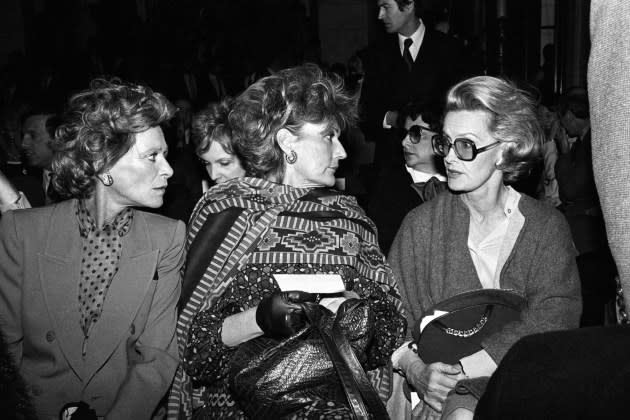Creativity Catalysts Who Have Far-reaching Influence

WWD began its capture of the muses who would inspire decades of runway collections in the 1920s, often in its long-standing column “Amusements.” It featured illustrations of cinematic darlings like Joan Crawford and Lena Horne, as well as many others whose careers were just starting to make headlines. WWD would also introduce its They Are Wearing section in the 1920s at the onset of photo storytelling, capturing the heartbeat of the global social scene and looking at those who were part of it to signal what was next in fashion. As the viewer’s curiosity about the who, what and who was wearing what peaked, WWD introduced its now familiar Eye pages, which would feature a cadre of familiar faces like Jaqueline Kennedy Onassis, whose entrance into fashion’s upper ranks came not only with her role as FLOTUS but as her independent agency started the rise of influencer culture. After her marriage to shipping magnate Aristotle Onassis in 1968, Jackie O, the alias given to her by John B. Fairchild, would remain synonymous with style. Jackie O would become part of a long list of social muses of the time who were given the moniker Ladies Who Lunch, and who were outfitted for their outings by designers from Christian Dior to Oscar de la Renta. The list began with an eclectic group of international jet setters like C.Z. Guest, Babe Paley, Nan Kempner, Princess Grace Kelly of Monaco and others. These ladies bought off the runway, and designers obliged the call, often creating collections suited for their every social occasion.
RELATED: When Designers Look Back for Inspiration
More from WWD
Paige Lorenze Hosts First-Ever Dairy Boy Pop-Up in Soho, Debuts New Denim Line
Streamy Awards 2023: Performers, Presenters and How to Watch
By the 1970s, when WWD wrote “fashion is for everyone” as trends began to favor movements in the cultural zeitgeist, models and celebrities became the ultimate muses. Models Twiggy and Donyale Luna arrived in the 1960s. The next half of the 20th century saw a mix of friends, queens of disco, soul and rock and roll, celebrities, and “It” girls dominating the social scene and serving as muses. Yves Saint Laurent was not only inspired by his girl friends Loulou de la Falaise and Betty Catroux, but he dressed them, too. His first house muses Mounia and Kirat Bhinder, would assist in bringing his contemporary take on the couture and ready-to-wear to his ultimate female consumer in the 1980s. With a brigade of models walking the runways from New York to Paris and the ultimate showdown, the Battle of Versailles, designers found a plethora of new muses. Hubert de Givenchy created his Black model cabine. Stephen Burrows saw his muse in youthful American model Pat Cleveland. Halston, like Givenchy, had his own cabine of models dubbed the Halstonettes. Tina Chow, model, muse and entrepreneur, would influence the likes of Karl Lagerfeld and Issey Miyake. But fashion models weren’t all the rage. Queens of the concert stage, like Cher, Diana Ross, Grace Jones, Madonna and Tina Turner, all continue to inspire fashion designers with their show-stopping personas.
As fashion moves forward, so does its muse. By 1990, the industry begins its trajectory into what is now known as influencer culture — it marks the birth of the supermodel and superstar as muse. Recognized by first name alone, Naomi, Kate, Linda, Cindy, Christy, Giselle and others become the ones to watch. Now, with technology advancing the global nature of everything, and designers embracing a more diverse roster of muses, Rihanna, Beyoncé and Jennie Kim join the many who inspire fashion today.
Launch Gallery: WWD Archive Fashion Muses: Dressed to Inspire
Best of WWD
